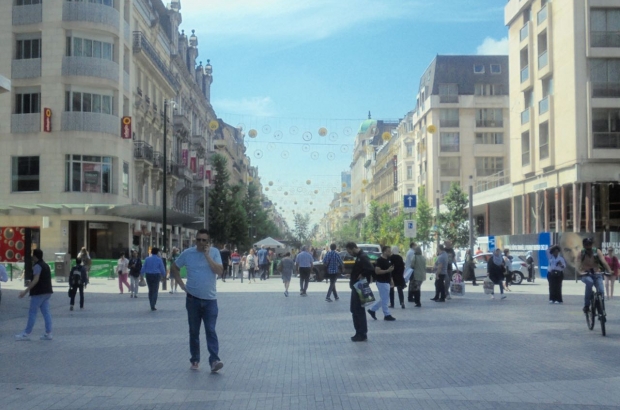- Daily & Weekly newsletters
- Buy & download The Bulletin
- Comment on our articles
First stretch of Brussels' pedestrian zone is 10 years old
Brussels’ city centre pedestrian zone, between Place Fontainas and Avenue Adolphe Max, the first part of which was inaugurated 10 years ago, has become one of the busiest in the capital - but it is also criticised for being too focused on tourists or events, and not enough on residents.
In January 2014, the city council announced its plans to redevelop the centre of the capital as “a new heart for Brussels”. The intention was to give residents more space and the economy a new boost.
The project of the socialists and liberals under mayor Yvan Mayeur, and later Philippe Close, was finally inaugurated on 29 June 2015. That day, Boulevard Anspach became car-free for about 800 metres - the first stretch of what would become a bigger car-free zone.
The reconstruction of the area ultimately cost €27.8 million, at least €7 million more than budgeted, and the works lasted until the summer of 2024. Not only the avenue itself, but also surrounding streets and squares were given a facelift, with new paving and more greenery.
Since its redevelopment, the pedestrian zone has become the fourth most visited “artery” in Brussels, with 29,100 visitors every day, after Rue Neuve, Porte de Namur and the Grand-Place. More than half (51%) of the commercial offer is made up of catering establishments, including many fast food outlets.
According to Brussels Environment, the air quality in the centre has improved slightly, with fewer concentrations of nitrogen dioxide (NO2) in particular, although they remain higher than the World Health Organisation’s standard. The organisation notes that the city’s mobility plan and the instigation of low emission zones in the Brussels region has also contributed to the lower NO2 levels.
The City of Brussels also refers to many renovation projects in and around the pedestrian zone, such as the Oxy Tower (the former Centre Monnaie), Brouck’r (at the UGC cinema) or The Dome (the former Actiris building).
But critics such as InterEnvironnement Bruxelles (IEB), that works to improve citizen’s living conditions, or ARAU, which is concerned about heritage, lament a lack of commercial vision and a risk of over-tourism.
“The city has made a choice: to favour the visitor, to the detriment of the residents,” ARAU said. “This policy of attractiveness increases the risk of seeing over-tourism degrading the liveability of the town centre.”
For ARAU director Marion Alecian, “the idea of achieving an open-air shopping gallery in the centre’s boulevards is an outdated model of the 1980s,” adding that the succession of development projects involving endless demolitions and reconstructions, means “we receive many complaints from local residents saying they want to leave because of the noise.”
ARAU and InterEnvironnement also emphasise that the new projects show a lack of affordable housing and that mobility problems also persist.
A survey by Brussels Mobility shows that support for the pedestrian zone increased between 2017 and 2021, with more positive reactions in particular from people who visit Brussels city centre than from Brussels residents living in the periphery. Since 2021, users of the zone also said they were more pleased with the quality of the pavements and surrounding infrastructure such as benches and urban furniture.
Brussels mayor Philippe Close defends the project, which he says is now seen as a focal part of the city: “When I talk to young people of 22-23 years old at university, and I say that 10 years ago there were four lanes of traffic, they are amazed,” he said.
The mayor also notes the increased number of people and events in town, when in the past, Brussels was seen as too sleepy. In addition there are more companies, and not small ones, such as Engie, Total Energies and the Bank of New York: “Take a walk in town, you will see a huge amount of people,” he said.
He said the pedestrianisation project is destined to change Brussels, “which has suffered too much from being a city just to use [mainly for work], a city where people do not care about the inhabitants, where you go in only to leave straight away.”
And while he agrees that pedestrianisation has attracted a majority of catering establishments, he added: “Yes, there are quite a few cafes and restaurants today. But there are also specialist shops and destination shops,” with other kinds of shops and shopping streets nearby.



















